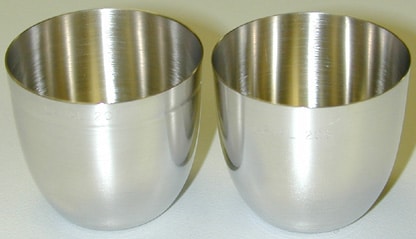Fusion and Ashing of samples for Atomic Absorption Spectroscopic analysis

Atomic Absorption Spectroscopy is an affordable and sensitive technique for determination of trace metals in samples ranging from drinking water, beverages, foods, pharmaceuticals, biological fluids, geological samples, archaeological specimens, forensic samples, cosmetics and metal alloys. It is your good fortune if you have to analyse a sample that does not require sample pre-treatment. A number of samples require prior sample digestion, fusion or ashing to bring them into liquid state for analysis by Atomic Absorption Spectroscopy.
Solid samples such as body tissue, hair, blood, fats and oils, minerals, rocks, soils, ceramics, oxides, coal, etc are mostly extracted using acid digestion. Benefits of microwave radiation over open acid digestion offers a faster and contamination free option for analysis of such samples. Since earlier times fusion and ashing have been in use for sample pre-treatment prior to analysis Characteristic features of these techniques are discussed in this article.
Fusion
Fusion is a process of heating the sample with flux materials such as sodium carbonate or lithium carbonate to form readily soluble salts which can be easily digested with mineral acids.
Sodium carbonate fusion is useful for minerals, refractories and insoluble metal fluorides. On the other hand lithium carbonate fusion offers some additional advantages :
- Lithium salts have greater solubility than sodium salts
- Less signal quenching than sodium carbonate due to lighter mass of lithium
Platinum crucibles are commonly used for fusion. Platinum is resistant to most acids and can be heated and cooled rapidly. It should not be heated above 11000C. Platinum is attacked by Cu,Hg and P so materials containing these elements should not be heated in platinum crucibles. Graphite crucibles are inexpensive Porosity of graphite is the limiting factor for trace metal studies.
Disadvantages
- Solids in solution can lead to clogging of nebuliser capillaries
- Solution may require further digestion before analysis
- Contamination from crucible material
Ashing
Ashing involves heating a sample to noncombustible ash which can be analysed for its composition.
Dry ashing is used for decomposing organic samples in a muffle furnace at 450 – 500°C whereas in sulphated ashing sample is charred in open flame with a few drops of sulphuric acid, drying and placing in a muffle furnace.
Advantages
- Large sample amounts can be decomposed when metals are present in trace amounts
- Little or no use of reagents
Disadvantages
- Losses due to retention by ashing container
- Losses due to sample volatilization
- Contamination from ashing container
- Contamination inside muffle furnace
- Loss of low-density ash due to air currents when furnace door is opened
- Toxic gases may be evolved
Both fusion and ashing are in use in several laboratories even today to aid digestion of samples where microwave digestion systems are not available. These are time consuming practices but permit low-cost digestion of samples and provide desirable accuracy of results provided adequate precautions are exercised.
Please feel free to offer your comments and suggestions.
Responses